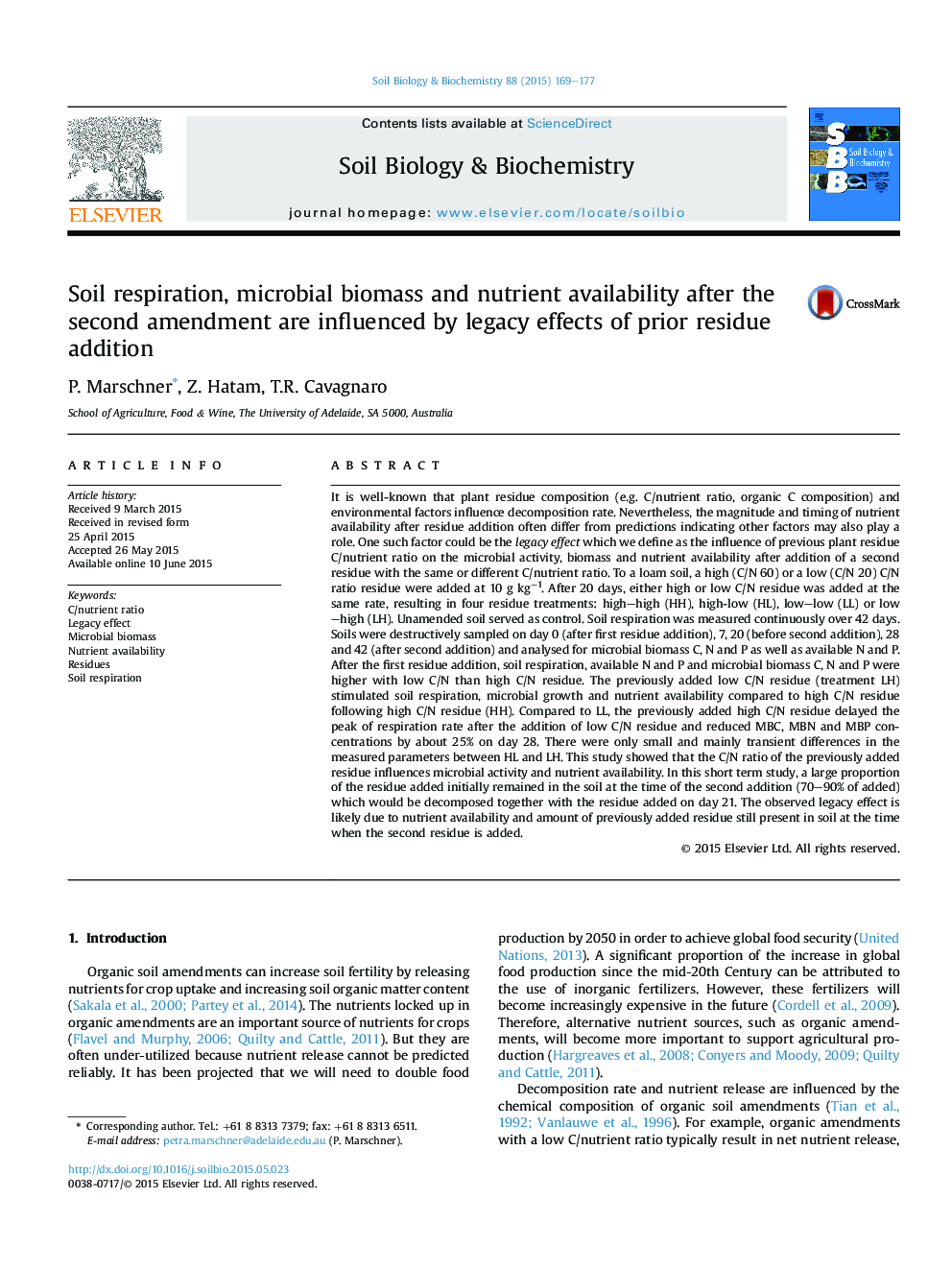| Article ID | Journal | Published Year | Pages | File Type |
|---|---|---|---|---|
| 8363975 | Soil Biology and Biochemistry | 2015 | 9 Pages |
Abstract
It is well-known that plant residue composition (e.g. C/nutrient ratio, organic C composition) and environmental factors influence decomposition rate. Nevertheless, the magnitude and timing of nutrient availability after residue addition often differ from predictions indicating other factors may also play a role. One such factor could be the legacy effect which we define as the influence of previous plant residue C/nutrient ratio on the microbial activity, biomass and nutrient availability after addition of a second residue with the same or different C/nutrient ratio. To a loam soil, a high (C/N 60) or a low (C/N 20) C/N ratio residue were added at 10 g kgâ1. After 20 days, either high or low C/N residue was added at the same rate, resulting in four residue treatments: high-high (HH), high-low (HL), low-low (LL) or low-high (LH). Unamended soil served as control. Soil respiration was measured continuously over 42 days. Soils were destructively sampled on day 0 (after first residue addition), 7, 20 (before second addition), 28 and 42 (after second addition) and analysed for microbial biomass C, N and P as well as available N and P. After the first residue addition, soil respiration, available N and P and microbial biomass C, N and P were higher with low C/N than high C/N residue. The previously added low C/N residue (treatment LH) stimulated soil respiration, microbial growth and nutrient availability compared to high C/N residue following high C/N residue (HH). Compared to LL, the previously added high C/N residue delayed the peak of respiration rate after the addition of low C/N residue and reduced MBC, MBN and MBP concentrations by about 25% on day 28. There were only small and mainly transient differences in the measured parameters between HL and LH. This study showed that the C/N ratio of the previously added residue influences microbial activity and nutrient availability. In this short term study, a large proportion of the residue added initially remained in the soil at the time of the second addition (70-90% of added) which would be decomposed together with the residue added on day 21. The observed legacy effect is likely due to nutrient availability and amount of previously added residue still present in soil at the time when the second residue is added.
Related Topics
Life Sciences
Agricultural and Biological Sciences
Soil Science
Authors
P. Marschner, Z. Hatam, T.R. Cavagnaro,
